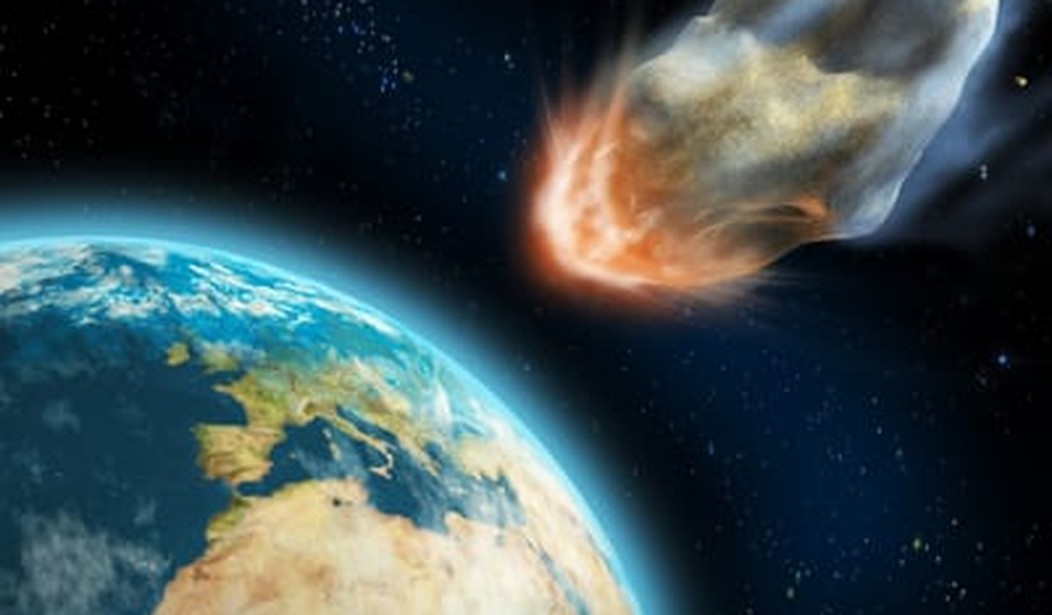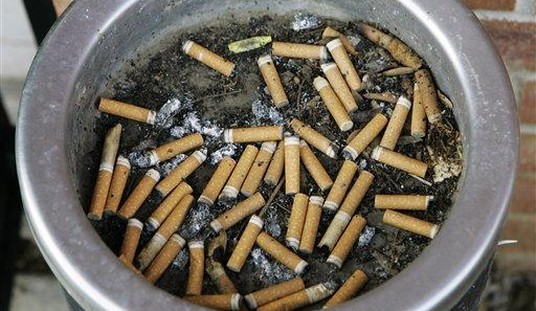A House panel heard today that the country is ill-prepared to even detect a 100-meter-diameter asteroid that could wipe out a city or cause other catastrophic effects such as a smothering dust cloud or towering tsunami waves.
Lawmakers have been on edge about America’s ability to react to or even notice in time space rocks coming through the atmosphere since the Feb. 15 flyby of asteroid 2012DA14 coupled with the explosion of a meteor above Chelyabinsk, Siberia.
As scientists predicted, 2012DA14 was harmless but the shock wave from the Russian meteor blew out windows and injured 1,200 people.
That rock caught NASA as off-guard as the Siberian residents.
“It came out of the sun,” John Holdren, director of the White House office of science and technology policy, told the House Science, Space and Technology Committee today. “It came from a direction where our telescopes could not look. We cannot look into the sun.”
“We had no insight in that at all,” said Gen. William Shelton, commander of U.S. Air Force Space Command. “We were aware of the event when it occurred.”
Holdren said dozens of asteroids a meter or more in size, with the biggest usually four meters across, enter and burn up high in the Earth’s atmosphere each year. A larger event like the 1908 asteroid explosion over Siberia that leveled trees for 850 square miles could cause “hundreds of thousands of casualties” if the 15-megaton explosion happened over an urban area.
But the probability of this once-in-1,000-years event is further lessened by taking into account that land only covers 30 percent of the Earth and urban areas make up 2-3 percent of that land area.
“But the potential consequences of such an event are so large that it makes sense to take the risk seriously,” Holdren said.
In 1998, Congress told NASA to find and track at least 90 percent of near-Earth objects greater than one kilometer in diameter within the next decade; that was finished by 2011. In 2005, Congress wanted all such objects with diameters of more than 140 meters catalogued by 2020.
“About 80 tons of material in the form of dust grains and small meteoroids enter the Earth’s atmosphere every single day. Objects the size of a basketball arrive once a day, and objects as large as a car arrive about once per week,” NASA administrator Gen. Charles Bolden testified, adding his agency is trying to work toward the goal of sending a manned mission to an asteroid by 2025.
To better protect the Earth, though, an agency that already canned the space shuttle will have to have deep pockets.
“I do not believe that NASA is somehow going to defy budget gravity and get an increase when everyone else is getting cuts,” said Chairman Lamar Smith (R-Texas). “But we need to find ways to prioritize NASA’s projects and squeeze as much productivity as we can out of the funds we have.”
“Examining and exploring ways to protect the Earth from asteroids and meteors is a priority for the American people and should be a priority for NASA,” he added.
Under questioning from Smith, Holdren said current capabilities have detected less than 10 percent of 100-meter asteroids — an estimated 13,000 to 20,000 “city destroyers.”
“The number of undetected potential city killers is — is very large. It’s in the range of 10,000 or more,” Holdren said.
Bolden said identifying those rocks to be able to track them would require the help of a private contractor. Launching an infrared sensor into Venus’ orbit to monitor objects threatening the Earth would cost about three-quarters of a billion dollars.
“Our estimate right now is at the present budget levels… it will be 2030 before we’re able to reach the 90 percent level that was prescribed by Congress to detect and characterize those — 90 percent of the 140 meter class,” he said.
“What steps have we taken to bring countries together that could contribute those billions of dollars, as well as our own?” asked Rep. Dana Rohrabacher (R-Calif.). “…I would suggest especially including Russia in on this, and they may be able to make some major contributions, save us some money, and actually make a more effective system. And with that said, I’d like to include all countries, except China.”
Holdren said “a very powerful laser” could throw an asteroid off orbit, and other approaches “include hitting it with a very heavy impactor.”
Rep. Eric Swalwell (D-Calif.) tried to pin the asteroid threat on sequestration, asking witnesses if they felt less prepared to tackle objects hurtling through the atmosphere after the implementation of the Budget Control Act cuts.
“Yes, I am very concerned about the effects on sequestration on all of our ability to do what it is you ask us to do,” Bolden responded. “We all know what we’re facing today, and we’re all sitting here today as the Congress and the administration try to figure out sequestration, something that never should have happened, nobody planned to happen, but we’re facing it today.”
“Until the recent Russian impact, quite a few people thought those of us who were even aware of this or dare mention it were on the kooky side,” said Rep. Bill Posey (R-Fla.).
“A good segment of the population think it’s just a matter of calling Bruce Willis in and, you know, notwithstanding we don’t have a shuttle anymore. You know, that’s impossible,” Posey continued. “What would we do if you detected even a small one, like the one that detonated in Russia, headed for New York City in three weeks? What would we do? Bend over and what?”
“We are where we are today because, you know, you all told us to do something and it — and between the administration and the Congress, the funding to do that did not — the bottom line is always the funding did not come. And I don’t care whose fault it is or if it’s anybody’s fault,” Bolden said.
“And so the answer to you is if it’s coming in three weeks, pray,” the NASA chief continued. “…That’s not bad policy. I’m a practicing Episcopalian and I love what the pope’s doing right now, I’ll tell you. Things have happened. You got to pray.”









Join the conversation as a VIP Member